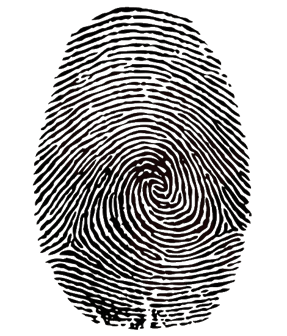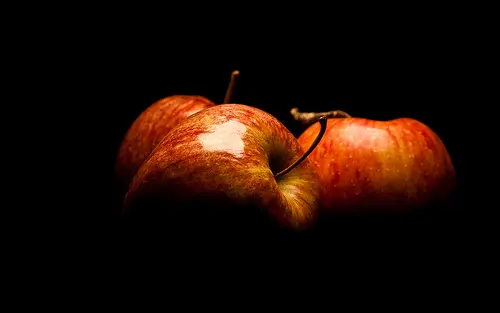What is Identity?

To me, a person’s identity is how they describe/express themselves through aspects of their personality such as morals, emotions, appearance, morals, interests, which can effect how they act. What others describe someone as can also be considered a part of their identity, such as their fashion sense, ethnicity, etc… Sometimes some parts of a person’s identity can be kept secret from others for different reasons.
Identity can be influenced by the place a person lives in, as a place can provide a sense of community, which a person can identify themselves within or explore what they are/can be in that community. A place provides a person with a general culture to identify themselves with, while the people around them can heavily influence their personality, maybe through social expectations or norms, and other parts of their identity, such as likes/dislikes, how they present themselves etc…
I also think upbringing can play a large role in forming a person’s identity/personality, in the sense that a person can decide to be similar to their parents/family/friends, or completely different (which may leave some people feeling lost or confused about their identity)
Identity (or Identification) can also refer to how a person is literally identified, for example a person’s drivers license shows some information about that person, such as their date of birth, name, country they live in, etc…
Mood Board of General Ideas
Case Studies:
Claude Cahun

Lucy Schwob, better known as Claude Cahun, was a French, early-mid 20th century photographer, writer, sculptor and activist, who explored gender through surrealist photographs. They worked with their lover Suzanne Malherbe, better known as Marcel Moore, to create images which explored both masculinity and femininity. They moved to Jersey in 1937 as a way to escape from the fascist ideals in France. The pair opposed the German forces who occupied Jersey in 1940 by creating notes addressed to German soldiers with poetical messages to make them think about what they themselves want to do, a cryptic and almost surreal method. A few years after Jersey was liberated from the German Forces, they were recognised for their activism and resistance towards the Germans with a medal of French Gratitude in 1951. With the emotional and physical help of Moore, they continued to create thought invoking work.
Image Analysis

This image could be a way for Cahun to explore the male gender as being the more physically-focussed, not very romantic/emotional gender, as seen by the text “I am in training don’t kiss me” on their shirt, while also using lipstick and hearts to contradict, or perhaps mock, that less emotional/romantic view. Cahun’s body language in this image could also portray men as being more vocal and confident about their views compared to women, which could be a way for them to try and enforce equality of voices and freedom of speech between the genders. I like the way the white clothing worn by Cahun contrasts with the black backdrop, perhaps to emphasise the message (in this case literal text and drawings) she is trying to voice. The lighting in this image is not too harsh, with little to no shadow appearing on Cahun at all, Cahun probably did this to make themselves, and what they was exploring, clearer.
Other examples of their work:
Jesse Treece

Treece is a self-taught collage artist based in Seattle, USA, who was inspired to create collages when he found a box of old newspaper/magazine clippings and decided to create a visual story and express himself with them. He likes 70-80’s style comic book strips and magazines, which he takes inspiration from to create ‘disturbing’ imagery. He typically uses glue and scissors to create his collages manually, mixing ordinary and whimsical images together to create several unique and somewhat absurd collages.
Image Analysis

As this image is a collage, lighting varies between each image it uses. The lighting is soft on the background images, however on the image with the three hooded figures, lighting is slightly harsher, which allows shadows to form behind the creases in the clothes. The shadows on the left-most figure are the most dense and are the darkest point on the image, which allows that image to contrast more with the whole collage. The colour palette in this image is quite limited, the majority of it being made up of dark greys, however, there is some light red on the figures faces and the circle in the background, as well as a dark, faded blue tint in the background, which stands out from the rest of the image. There are a lot of lines on this image, from the hill like structures in the background, the building in the bottom right of the image, the horizon line where the water meets the hill and on the clothing of the three figures, however where there is colour, there are not too many lines, making them appear softer, while the black and white parts of the image look more jagged.
Other examples of his work:
Comparing Claude Cahun’s and Jesse Treece’s work
Similarities:
- Both use portraits of people playing a role, perhaps of a job or hobby, in everyday situations
- Both use objects/props/costumes/clothing as a way to make the image more interesting
Differences:
- Cahun typically likes to use plain backdrops to emphasise the model in the image, whereas Treece uses backgrounds (usually) taken from one or more landscape photographs
- Treece’s collages explore scenes with unnatural and sometimes confusing imagery (such as people sailing in a village), while Cahun uses portraiture as a way to explore identity
- Cahun mainly explores the theme of Gender through their photography clearly, whereas Treece’s images explore his own ideas and fictional worlds that he creates.
- Treece uses a large colour palette and different types of geometrical shapes to create variety in his images, whereas Cahun mainly uses black and white (due to equipment at the time) portraiture

Statement of Intent:
I intend to explore my own identity using a series of photomontages exploring the different ‘levels’ of my personality. I based this idea of ‘levels’ from a Japanese proverb, which regards a person’s identity as being made up of three faces: The First face being the one you show to strangers/the public, the Second face being the one you show to close friends/family/loved ones, and the Third face being the one you show only to yourself. With each face (with the First face being leftmost and the Third being the rightmost if I was to place them in order) getting more and more personal. I will use a collection of self portraits (with different facial expressions, poses and shot types (headshot, full body, etc…)), landscapes and objects to create the photomontages and plan to lay them out in a triptych or sequence.
Photoshoots
Photoshoot Plan 1 (Landscapes):
| What? | I will take pictures of the landscapes around this area, such as the fields, roads, beach and the view from the top of a hill downwards. |
| Where? | The area around to my house with beaches, fields and houses. |
| When? | When the sun is out so I can capture natural light in the images, around noon. |
| Why? | I have lived around this area my whole life so it is special to me. |
| How? | I will search for interesting parts of the different sceneries around this area. |

Contact Sheet



Photoshoot Plan 2 (Objects):
| What? | I will take images of personal objects which can help identify me. |
| Where? | At my home. |
| When? | During the day to make use of natural light. |
| Why? | These objects have different forms and shapes, which, if I use with a photomontage, will give my final images a more interesting look. |
| How? | I will lay the objects on plain paper to get a clear white background and I will put it next to a window to make use of natural light. |

Contact Sheet


Photoshoot Plan 3 (Portraits):
| Who? | Myself (Self-portrait). |
| What? | I will take pictures of myself with different facial expressions or hairstyles to represent my identity. |
| Where? | My home. |
| When? | Likely during the day to make use of natural light. |
| Why? | I think a self-portrait is an effective way of capturing someone’s own identity. |
| How? | Maybe using a mirror or with someone else’s aid. |

Contact Sheet

























































































